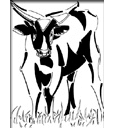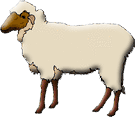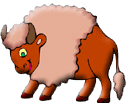



|
| Leather Types |
Cow Hide Leather
Because abundant cow leather is available, it is most commonly
used leather in the glove industry. The US as well as Australia
generate bulk of these hides. Several of many advantages
include comfort, durability, chafe resistance, and breath-ability.
In addition, chrome tanning of this leather provides greater
wear and heat resistance.
Buffalo
Hide Leather
Buffalo leather is available, it is most commonly used
leather in the garment & glove industry. The Asia
generates bulk of these hides. Several of many advantages
include comfort, durability, chafe resistance, and breath-ability.
In addition, chrome tanning of this leather provides greater
wear and heat resistance.
Split
Leather
Because abundant cow leather is available, it is most
commonly used leather in the glove industry. The US as
well as Australia generate bulk of these hides. Several
of many advantages include comfort, durability, chafe
resistance, and breath-ability. In addition, chrome tanning
of this leather provides greater wear and heat resistance.
Goat
Skin Leather
It has been proven, from independent testing, that goat
skin is the nature’s softest leather after Deer skin leather.
It is also the softest leather due to the presence of
Lanolin. This leather is highly recommended for applications
requiring tangible sensitivity.
Sheep
Skin Leather
Incredibly comfortable sheepskin gloves keep hands always
warm. Whether the activity demand the sheepskin leather
to be in or outdoors. Several of many advantages include
comfort, durability, chafe resistance, and breath-ability.
In addition, chrome tanning of this leather provides greater
wear and heat resistance
Deer
Skin Leather
Acknowledged for nature's true luxurious, yet softest
leathers, there is not leather softer than deer skin leather
in the planate, providing all day comfort and sensitivity
to touch. Several of many advantages include comfort,
durability, chafe resistance, and breath-ability. In addition,
chrome tanning of this leather provides greater wear and
heat resistance.
|
Grain
This type of leather is the smooth external side of the hide.
All grain leathers provide durability and adroitness.
Split
This type of leather is known as the hide's internal rough texture.
Three splits divide the hide: belly, side, and shoulder split.
1. Belly Split
Although the belly is most economical, it has the least consistency
of texture and appearance.
2. Side Split
Initiates from the rib area of animal. The side accounts for
the most durable part of the animal and provides the greatest
protection because of its greater density of fibers.
3. Shoulder Split
This section is more economical than the side; however, it
is less durable. Furthermore, the movement of the animal causes
its shoulders to have less fibers and a more visible texture
difference.
| Development |
|
Cut
and Sewn Patterns
When any leather is truncated and sewn for occupational
gloves, they are generally constructed in one of three
patterns, i.e. Round Thumb, Gunn or Clute.
Cuff Styles
The most common cuff styles are mainly for: safety, gauntlet,
band top, knit wrist and slip-on. These styles usually
vary depending on the needs for specific applications.
Cuff
Materials
This material is aimed towards long lasting wear and more
durable applications. It is also washable. Following are
materials used to prepare cuffs:
• Denim
- economical single-fabric material.
• Duck - single ply of cotton material.
• Plasticized - waterproof polyethylene layer laminated
between two pieces of fabric.
• Rubberized - two layers of fabric with a rubber material
in between.
• Starched - two layers of fabric laminated, then starched.
|
Assuring
industrial hand protection maximizes safety. It can only be
achieved when proper care and cleaning of gloves is maintained
on a regular basis. Effective care will increase savings by
affording longer glove life.
Cleaning/Washing
Cleaning regularly keep most styles of leather performance best
and cause them to last longer. Specific styles of variety of
gloves withstand the rigidity of laundering better than others.
Please inquirer manufacturer before washing the gloves.
Inspection
or safety of hand daily inspections are recommended prior to
wearing to assure that no significant damage to either the inside
or outside surface has occurred.
Storage
Gloves should be stored in well-ventilated containers or shelves
at normal room temperature. In addition, conserve them from
direct sunlight.

|